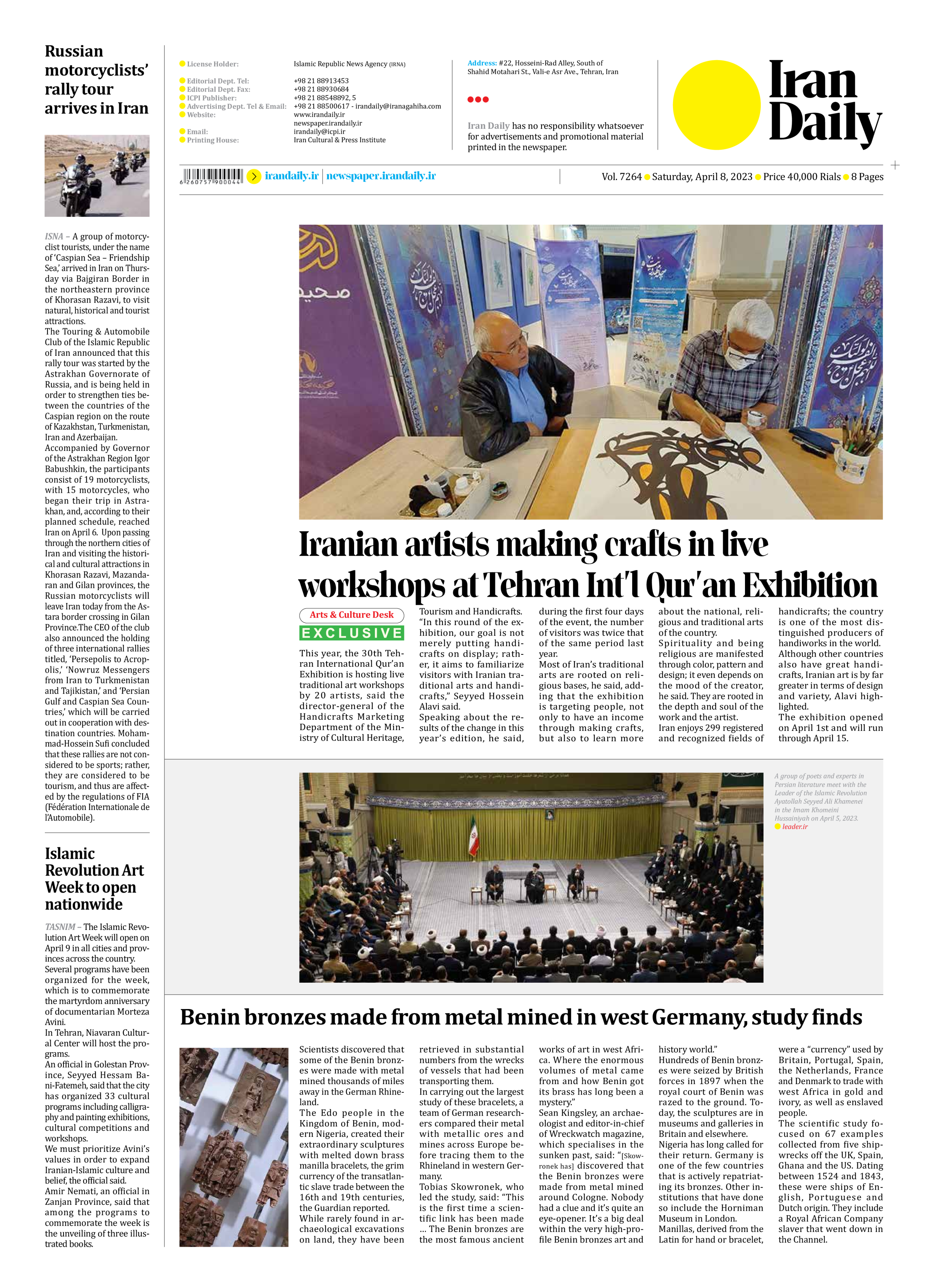
Benin bronzes made from metal mined in west Germany, study finds
Scientists discovered that some of the Benin bronzes were made with metal mined thousands of miles away in the German Rhineland.
The Edo people in the Kingdom of Benin, modern Nigeria, created their extraordinary sculptures with melted down brass manilla bracelets, the grim currency of the transatlantic slave trade between the 16th and 19th centuries, the Guardian reported.
While rarely found in archaeological excavations on land, they have been retrieved in substantial numbers from the wrecks of vessels that had been transporting them.
In carrying out the largest study of these bracelets, a team of German researchers compared their metal with metallic ores and mines across Europe before tracing them to the Rhineland in western Germany.
Tobias Skowronek, who led the study, said: “This is the first time a scientific link has been made … The Benin bronzes are the most famous ancient works of art in west Africa. Where the enormous volumes of metal came from and how Benin got its brass has long been a mystery.”
Sean Kingsley, an archaeologist and editor-in-chief of Wreckwatch magazine, which specialises in the sunken past, said: “[Skowronek has] discovered that the Benin bronzes were made from metal mined around Cologne. Nobody had a clue and it’s quite an eye-opener. It’s a big deal within the very high-profile Benin bronzes art and history world.”
Hundreds of Benin bronzes were seized by British forces in 1897 when the royal court of Benin was razed to the ground. Today, the sculptures are in museums and galleries in Britain and elsewhere.
Nigeria has long called for their return. Germany is one of the few countries that is actively repatriating its bronzes. Other institutions that have done so include the Horniman Museum in London.
Manillas, derived from the Latin for hand or bracelet, were a “currency” used by Britain, Portugal, Spain, the Netherlands, France and Denmark to trade with west Africa in gold and ivory, as well as enslaved people.
The scientific study focused on 67 examples collected from five shipwrecks off the UK, Spain, Ghana and the US. Dating between 1524 and 1843, these were ships of English, Portuguese and Dutch origin. They include a Royal African Company slaver that went down in the Channel.







